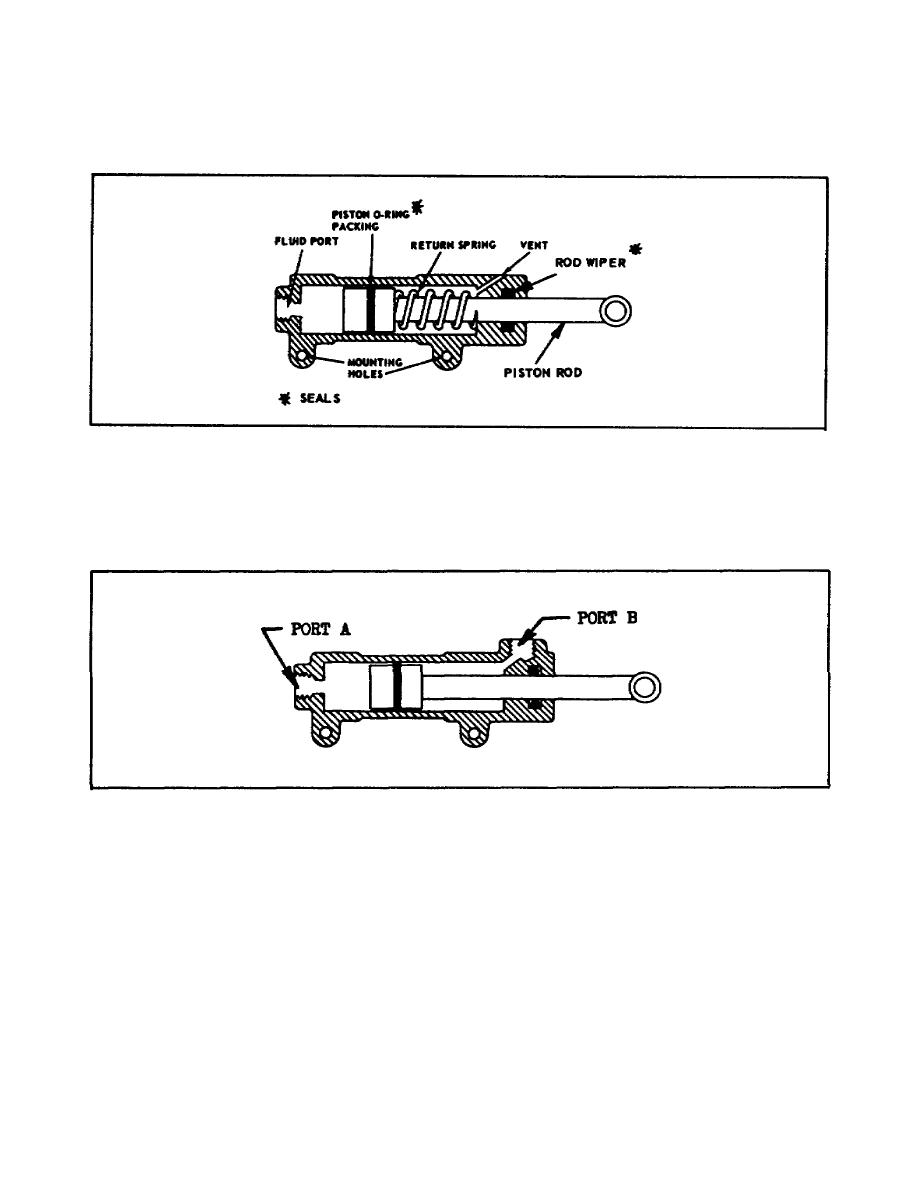
Pressure applied at port A causes the piston to extend, forcing the fluid on the opposite side of the
piston out of port B. When pressure is applied to port B, the piston and rod retract, forcing the fluid in
the opposite chamber out through port A.
Figure 2-1. Single-Action Actuating Cylinder.
This type of cylinder is powered in both directions by hydraulic pressure. A selector valve is
normally used to control a double-action actuating cylinder. Selector valves are discussed in the next
paragraph.
Figure 2-2. Double-Action Actuating Cylinder.
SELECTOR VALVES
Used in hydraulic systems to control the direction of operation of a mechanism, selector valves are also
referred to as directional control valves or control valves. They provide pathways for the simultaneous
flow of two streams of fluid, one under pressure into the actuating unit, and the other, a return stream,
out of the actuating unit. The selector valves have
27
AL0926



 Previous Page
Previous Page
